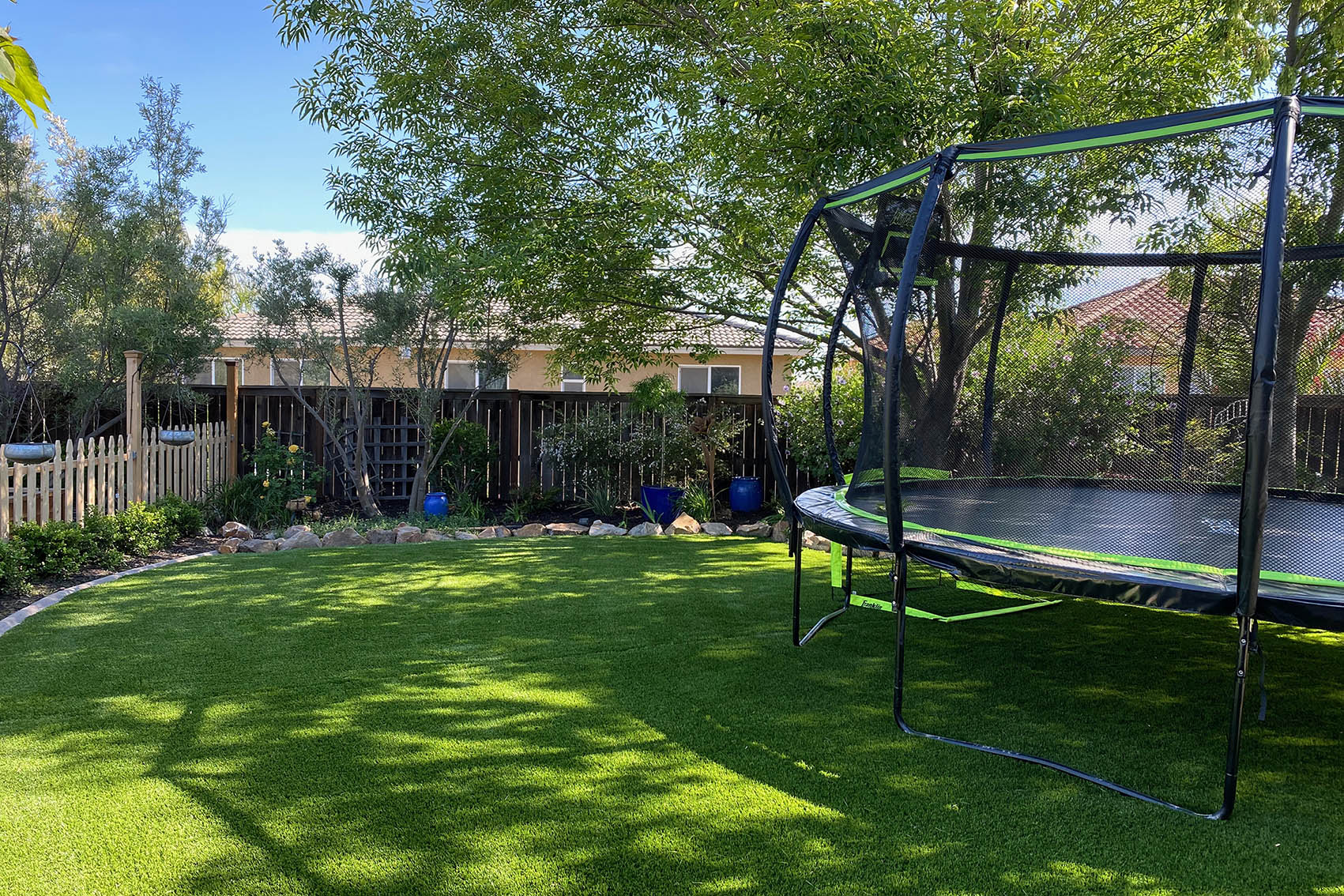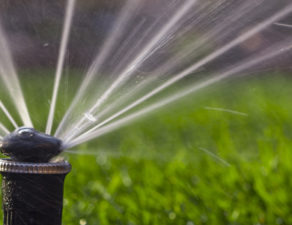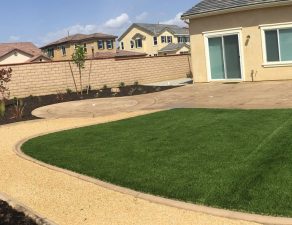
So, you’ve decided to go with artificial turf. It’s attractive, it’s uniform in appearance, and it’s lower maintenance… But wait. It’s not completely maintenance free!
That’s right. While artificial turf carries many benefits, including the fact that it’s easier to maintain than a grass lawn, you actually can’t just install it and forget it. Artificial turf will require some care to keep it looking (and even smelling) its best.
Dealing with weeds. You might be surprised to discover that weeds can invade artificial turf lawns, too. They’re usually much more sparse, but weeds can and do pop up through the backing. But if you pull them up, the way you might on a grass lawn, you risk uprooting the turf around it.
Instead, weeds in an artificial turf lawn must be sprayed with a water-based herbicide.
Remove debris. No, you don’t have to mow the lawn anymore, but you still have to clean it up. Excess debris can clog the drainage system, and lead to more weeds in your lawn. Remove leaves or branches as needed, either by hand or with a leaf blower.
During “high pollen” times, you should rinse your turf with water, especially if you suffer from allergies.
“Brush” your grass. Artificial turf can become matted and lose its uniform appearance in high-traffic areas. About once per week or so, brush or rake those areas against the grain to keep it looking fresh and fluffy. Just make sure to use a rake with synthetic or plastic bristles, rather than metal ones.
Avoid stains. Some items can leave frustrating, stubborn stains on your turf. Prevention is your best “medicine” here. Keep motor oil, suntan oil, cooking grease, wine, colored sodas, and other common stain culprits away from your yard. But when spills do happen, follow these steps:
● Clean up quickly, since stains are best removed before they set
● Blot the liquid with a dry towel or even kitty litter
● Rinse the turf with water and a mild detergent
● For stronger stains, use a solution of 3 percent ammonia in water
● Use mineral spirits on the toughest stains
● Always thoroughly rinse the area after cleaning
Tree sap and chewing gum can present a sticky challenge. For these accidents, use dry ice or aerosol refrigerants to freeze the material, then scrape it off your turf.
Clean up pet messes. If you allow solid waste to dry, it can be easier to remove. Urine can be simply washed away.
Artificial turf generally lasts between 15 to 25 years. Care for yours appropriately, and you can probably reach the longer end of that spectrum. Contact us if you have any other questions about caring for artificial turf, or if you’re considering an installation. We can help you decide if this type of lawn is right for you.


